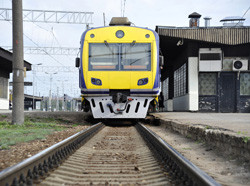Quieter railways are on track
The EU promotes railway transport as the most sustainable surface transport mode both for freight and passenger movements. However, the noise and vibrations are still perceived as weaknesses in need of improvement. In particular, vibrations caused by track and wheel irregularities that are specific to rail stand out as a criticism of rail transport. In the 'Railway induced vibration abatement solutions' (RIVAS) project, researchers had three years to explore ways and means of reducing vibrations to values near or below the threshold of perception. They developed a series of technologies to control vibrations at source or reduce them on the transmission path. RIVAS technologies were primarily developed to meet the needs of railway operators and infrastructure managers. The toolbox includes rail-fastening systems, sleepers and resilient elements for the tracks and sub-grade. These can find applications in suburban, regional and high-speed operations that tend to be built away from residential areas. Project researchers also defined test procedures to monitor and control the performance of anti-vibration measures under realistic conditions. During the course of the project, the new technologies were tested on or close to existing railway lines and their effectiveness was measured. Based on the results, the team compiled guidelines for their design and implementation. The undertaking has set the groundwork for establishing European standards and the harmonisation of metrics. The project team has defined methodologies for determining the nature and extent of the impact of vibrations on buildings nearby any railway infrastructure and their residents. Based on the estimated annoyance, track and vehicle conditions could be classified in terms of vibration-induced noise. RIVAS has been one of the largest EU-funded projects aiming to safeguard the railway sector's commercial competitiveness. Its 26 partners are keen to put the solutions proposed into practice and increase the quality of life for European citizens near railway lines.
Keywords
Railways, noise, transport, vibration, vibration abatement



